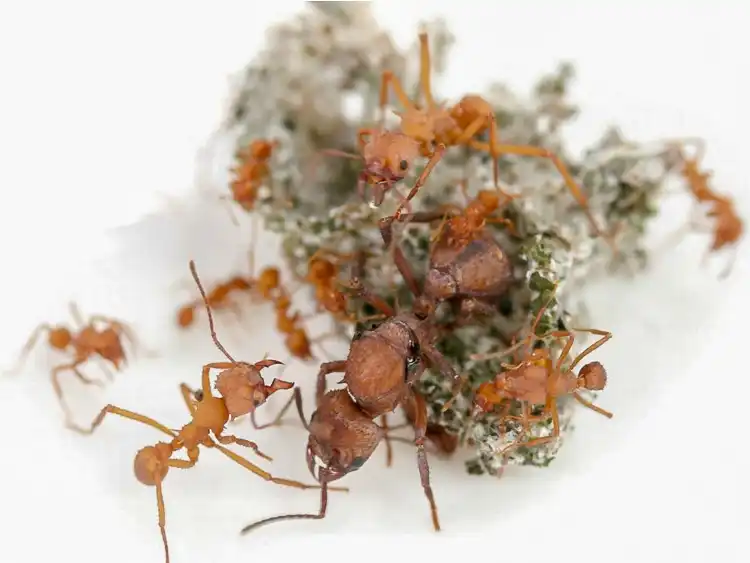Free UK Delivery on orders over £99
Leafcutter Ants Acromyrmex octospinosus
139.99
The Acromyrmex octospinosus Leafcutter Ants is likely one of the most well-known species among ant-keeping hobbyists and related fields. They range in size from 2mm nurses to 15mm majors, and their mandibles are made of metallic zinc, which is perfect for cutting soft plant matter. This fungus can break down the plant cellulose and turn it into nutrients to feed the entire colony while reserving some for its growth. While Acromyrmex is the most common leafcutter ant genus, there are three others: Atta, Trachymyrmex, and Cyphormyrmex.
Leafcutters are some of the most fascinating creatures in the insect world. These tiny insects have evolved a remarkable behaviour that involves cutting leaves and using them for various purposes.
Leafcutters belong to the genus Atta and Acromyrmex, and they are primarily found in the tropical regions of Central and South America. Contrary to popular belief, the ants do not consume the leaves they collect but instead transport them back to their nest.
But why do they do this?
To feed their symbiotic partner, the Leucocoprinus gongylophorus fungus. The answer lies in their diet. Unlike most ants that rely on scavenging for food, leaf-cutter ants have evolved a sophisticated farming system. The leaves they cut are not eaten directly but are used as a substrate for cultivating a specific type of fungus. This fungus serves as their primary food source. By cutting and bringing leaves back to their nests, the ants create an ideal environment for the fungus to grow and thrive.
How do leafcutter ants build their nests?
The construction of a leaf cutter ant nest begins with the excavation of soil. The workers dig deep underground tunnels, creating a vast network of interconnected chambers. These chambers serve different purposes, such as housing the ant brood, storing fungus, and providing ventilation.
Leaf cutter ants also exhibit a unique behaviour known as "garbage disposal." Any waste produced by the fungus or the ants themselves is transported to specific chambers within the nest. This waste is then used as a substrate for growing a different type of fungus called "weeds." The ants actively remove and discard these weed gardens, ensuring the health and productivity of their primary fungus gardens.
Recent research has revealed that the ants actively manipulate the genetic composition of the fungus to enhance its productivity. Through selective breeding, the ants have shaped the genetic diversity of the fungus to optimize its nutrient absorption and overall performance.
Leaf cutter ants in the UK
We do not recommend the leafcutters for beginner ant keepers!
In the UK, leafcutter ants are considered an exotic and intriguing species. They are often kept in specially designed enclosures where visitors can observe their fascinating leaf-cutting behaviour. These enclosures mimic the ants' natural habitat and provide the necessary conditions for the ants to thrive. Leafcutter ants are found in lowland areas with shrubs and low-lying plants and typically live in climates with temperatures of 22-25C and 80-95% humidity. These ants are suitable for those looking to keep exotic ant species, as long as the temperature and humidity requirements are met. They are also known to grow quickly into large colonies and are active throughout the year without needing to hibernate.

